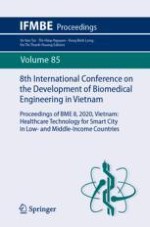2022 | OriginalPaper | Chapter
Noninvasive System for Tracking Naïve Induced Pluripotent Stem Cells During Reprogramming
Authors : Thi Hai Yen Tran, Aya Fukuda, Koji Hisatake
Published in: 8th International Conference on the Development of Biomedical Engineering in Vietnam
Publisher: Springer International Publishing
Activate our intelligent search to find suitable subject content or patents.
Select sections of text to find matching patents with Artificial Intelligence. powered by
Select sections of text to find additional relevant content using AI-assisted search. powered by
